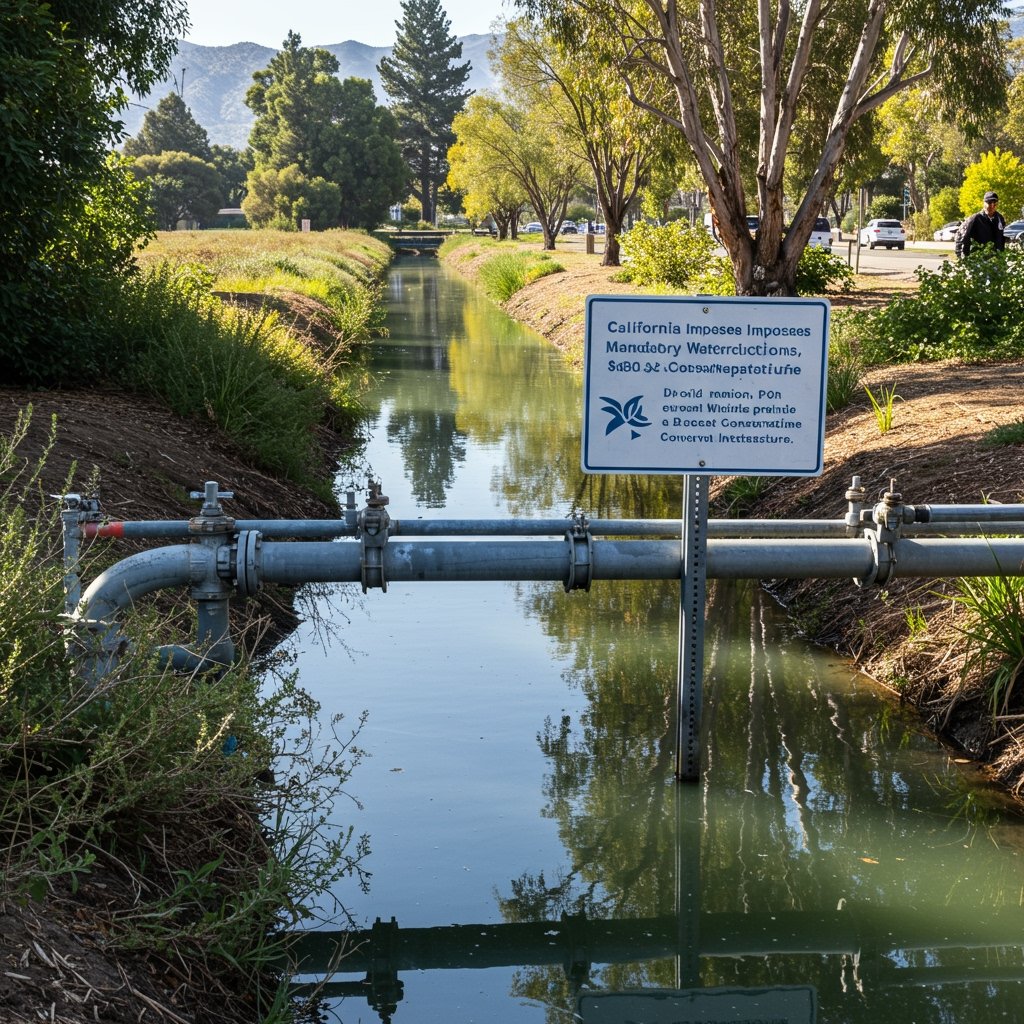California Acts to Secure Water Supply Amid Drought Concerns
SACRAMENTO, CA – The California State Water Resources Control Board today announced significant, mandatory actions aimed at bolstering the state’s water security. Effective March 1, 2025, new statewide water use restrictions will be imposed on both municipalities and individual residents. This decisive step comes as California faces concerningly low levels in key reservoirs and following a recent February report indicating a below-average snowpack – a critical source of water for the state.
Recognizing the urgent need for both immediate conservation and long-term resilience, the Board also revealed a substantial allocation of $600 million from state funds. This funding is specifically earmarked for “shovel-ready” water conservation and infrastructure projects across California. The ambitious investment is designed to catalyze projects that can be rapidly implemented, addressing pressing needs in water management and supply efficiency.
Mandatory Restrictions: A Statewide Call for Conservation
The mandatory restrictions represent a shift towards more stringent water management compared to voluntary measures. By making conservation obligatory across the state, the California State Water Resources Control Board aims to ensure uniform compliance and achieve significant water savings collectively. The specific details of the restrictions will likely be further elaborated upon for various sectors and household sizes, providing clear guidelines on permissible water use activities and potential limitations on non-essential uses like outdoor watering.
The rationale behind the timing and severity of the restrictions is directly linked to current environmental conditions. State officials have expressed concern over the capacity of major reservoirs, vital storage hubs for California’s water supply. These levels, while potentially variable year-to-year, are currently below desired thresholds for ensuring adequate supply through anticipated dry periods.
Furthermore, the disappointing February snowpack report underscores the vulnerability of California’s water system, which relies heavily on the Sierra Nevada snowpack melting gradually through the spring and summer to replenish reservoirs. A below-average snowpack translates directly to less natural water flowing into the system over the crucial warm months, necessitating proactive conservation measures from all water users.
Investing in Future Water Resilience: $600 Million Allocation
The $600 million in state funds represents a significant financial commitment to upgrading California’s water infrastructure and promoting efficient water use. The allocation targets projects that are ready for immediate implementation, meaning they have completed necessary planning and environmental review phases, allowing construction or deployment to begin swiftly.
A substantial portion of this funding is directed towards essential upgrades for municipal water treatment plants. Modernizing these facilities is crucial for improving the efficiency of water recycling processes, enhancing the quality of treated water for various uses (including potable reuse in the future, depending on regulatory frameworks), and reducing water loss within the treatment and distribution systems. These upgrades are foundational to building a more sustainable urban water cycle.
In addition to large-scale municipal projects, the funding includes incentives specifically designed to encourage the adoption of residential greywater systems. Greywater systems capture water from sinks, showers, and laundry (excluding toilet water) and divert it for non-potable uses like landscape irrigation. By providing financial incentives, the state aims to make these systems more accessible and affordable for homeowners, promoting decentralized water reuse and reducing demand on potable water supplies for outdoor purposes, which constitute a significant portion of residential water use.
Governor Newsom’s Support and Strategic Vision
The office of Governor Gavin Newsom has voiced strong support for the actions taken by the State Water Resources Control Board. Governor Newsom has consistently emphasized the importance of proactive strategies to manage California’s water resources in the face of a changing climate and persistent drought cycles. The announcement aligns with the Governor’s broader agenda focused on building resilience and ensuring long-term water security for the state’s residents, agriculture, and environment.
The Governor’s office highlighted these measures as critical steps towards achieving water security, particularly in anticipation of potential dry periods. This includes not only immediate conservation through mandatory restrictions but also the strategic investment in infrastructure that enhances efficiency, expands alternative water sources like recycled water, and encourages individual conservation efforts through programs like the greywater incentives.
Implications and Path Forward
The implementation of mandatory water restrictions effective March 1, 2025, will require municipalities to develop and enforce specific conservation ordinances tailored to their local conditions but adhering to statewide mandates. Residents will need to be prepared to adjust their water usage habits significantly to comply with the new rules.
The $600 million in funding will become available for eligible “shovel-ready” projects, with application processes and criteria to be detailed by relevant state agencies. The emphasis on readiness aims to ensure that these funds translate quickly into tangible improvements in water infrastructure and conservation capacity across California.
This combination of immediate demand reduction through mandatory restrictions and strategic investment in supply-side and efficiency projects reflects California’s comprehensive approach to managing its precious water resources. State officials underscore that these actions are necessary to navigate current challenges and build a more resilient water future for all Californians, preparing the state not just for the upcoming dry season but for the long-term impacts of climate change on water availability.



















